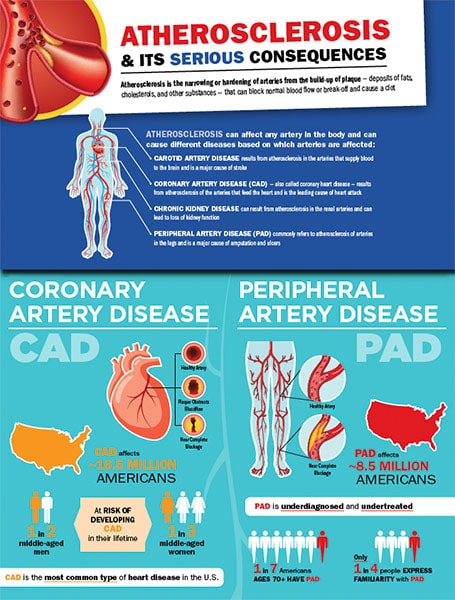A stroke occurs when blood flow is cut off to an area of brain, depriving its cells of oxygen.
Atherosclerosis and Its Serious Consequences
Published March 4, 2020

View the CAD and PAD Infographic Here.
Atherosclerosis is the narrowing or hardening of arteries from the build-up of plaque–deposits of fats, cholesterols, and other substances–that can block normal blood flow or break-off and cause a clot. Atherosclerosis can affect any artery in the body and can cause different diseases based on which arteries are affected.
Coronary artery disease (CAD)–also called coronary heart disease–results from atherosclerosis of the arteries that feed the heart and is the leading cause of heart attack. Peripheral artery disease (PAD) commonly refers to atherosclerosis of arteries in the legs and is a major cause of amputations and ulcers.
CAD and PAD combined impact an estimated 25 million Americans. Learn more about the symptoms, risk factors, complications, diagnoses, and treatment of these serious diseases.
Sources for all statistics are available here.
